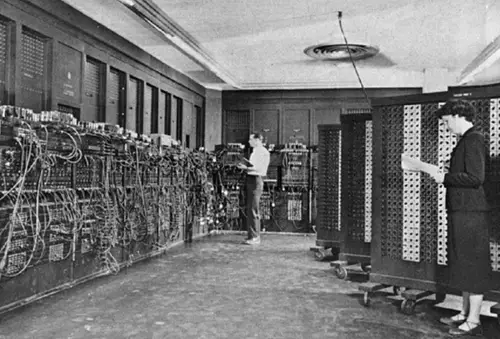History of Computers
As I am writing on the progress of computers, I see computers of the future being more mobile and more powered as compared to desktops and laptops, including the one I am using to compile the history of computing as a presentation. Check out the progress in the computer field as a PPT below. The link to the progress of the computers PDF file is given towards the end of the post.
Presentation Transcript: Important Points Anything that helps in computing anything is a computer. Early computers were basically calculators with or without storage capability. This presentation is about the progress of computers. 1] Early computers were mechanical 2] The Night-Time Machine was developed by Leonardo Da Vinci for guessing time at night when it was dark. In the daytime, they used to measure time using shadow. Clocks are also computers that compute time using tension or crystal ticks. 3] 1935: Odhner Circa was developed. This was among the first computers used by mathematicians. 4] 1820: Arithometer was developed for clerks for addition tasks 5] 1889: Felt’s Comptometer or Comptograph was among the first calculators/computers that could do mathematical operations while also being able to print. It could not store data, however. 6] 1904: Burroughs company invented and sold Burroughs calculator that could perform arithmetic operations. It was popular among clerks due to its size. 7] 1910: Burroughs created an additional machine and called it Adding Machine. This model could store data in the machine itself. 8] Around 1890, while others focused on calculating machines, Hermann Hollerith was busy creating punch cards for use with his Tabulating Machine and sorting box. The concept of the machine was to perform functions using blocking and passage of the electrical system. Electric needles ran on the punched cards. When they encountered gaps (hole), the circuit was complete and created a binary one. This was among the first machines to calculate massive amounts of data in split seconds and probably was lead for binary operations in the computers. 9] A book on Hermann’s Tabulating Machine is available under the name of Origins of Digital Computing. 10] The first real computer was ENIAC: It could perform arithmetic operations and also be able to perform some general purposes. However, it was too big and was not for the general public. It was developed around 1945
11] In 1948, the IBM SSEC was released. This was also a digital computer using vacuum tubes. However, input was still using punch cards, somewhat using the Hermann’s Tabulating Machine technology. 12] In 1959, IBM 1970 was developed. This machine was able to store data within the computer. It also marked the transition of computers from vacuum tubes to transistors. 13] The real revolution in computers was the MITS Altair 8800, designed in 1974. Apart from hobbyists, this was purchased by organizations to speed up their accounting. 14] The IBM 8086 brings us up to date with modern computers. It is an obsolete model with CPU and a large monitor but worked on transistors and complex ALU. Those types of models were called desktops as one would keep them on desks and use a keyboard and mouse to operate them. Input in such computers was binary signals sent by the keyboard (ASCII Characters) and mouse (screen coordinates). If you have programmed in MS BASIC, you can easily understand how these input devices worked. 15] The desktops were further shrunk as technology progressed further. Desktops are being replaced by laptops in many organizations. Individuals too prefer laptops as they are smaller and can be carried anywhere. The Microsoft Windows operating system became very popular. The future of computing is convertible computers and tablets. The only need of the hour is to provide powerful computing resources in a much small tablet and to keep it running, a battery that can last long.

